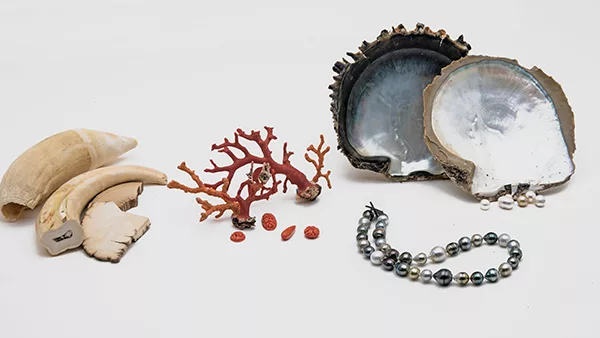
New pearl oyster species: pinctada persica
by Dr. L.E. Cartier & Dr. M.S. Krzemnicki & Dr. B. Lendvay, first published in Facette 27 (June 2021)

We recently tested a pearl jewellery set that consisted of 63 natural pearls, with 61 of them being strung on a thread and two additional loose natural pearls. Part of these pearls were of very remarkable size, reaching a maximum weight of 32 ct. The pearls exhibited an attractive colour, subtly ranging from slightly cream to cream.
We assume that these pearls are rather historic in age, which was confirmed by radiocarbon dating on three randomly selected pearls. The analysed trace elements revealed that a large majority of these pearls were saltwater natural pearls, except for three pearls which were freshwater natural pearls. This is not rare in historic natural pearl jewellery, as pearls were often collected and mixed together unknowingly.
The same pearls were further analysed using DNA fingerprinting and led to interesting findings. One of the pearls was conclusively identified as being from the Pinctada radiata species (Persian Gulf & Ceylon pearl oyster), a species that can produce pearls commonly called ‘Basra pearls’ in the trade.
Interestingly, the other two sampled pearls were attributed to another species: Pinctada persica or Pinctada margaritifera persica, which is a rare member of the Pinctada margaritifera species complex. To our knowledge, this is the first time that pearls from Pinctada persica have been reported. To date this species has only been found exclusively in the Persian Gulf (Ranjbar et al. 2016).
This case study shows the potential that DNA fingerprinting has to uncover previously unreported species of both pearls (and precious corals) used in jewellery and also to document species and geographic origins for pearls. In continuing this research, we are convinced that we will discover many new secrets about pearls in future.
Want to learn more about pearls?

Sign up for our free online course: Introduction to pearls


